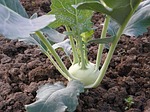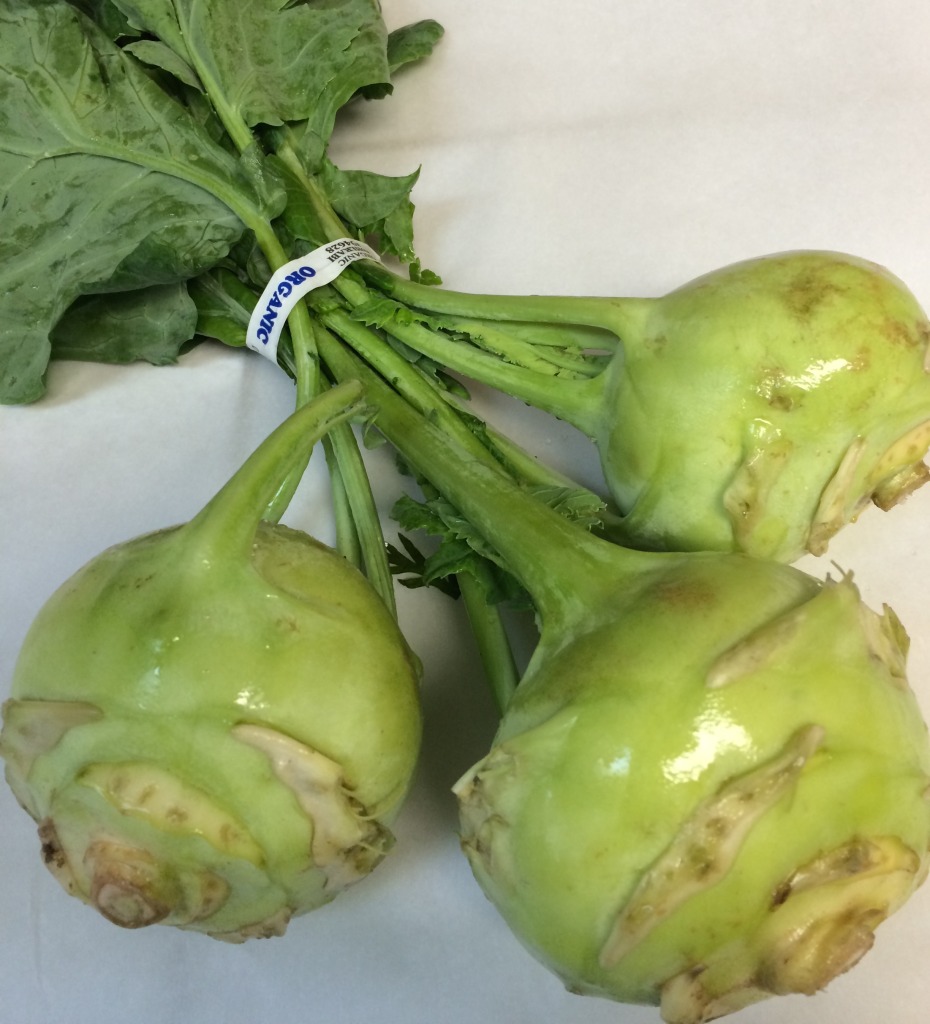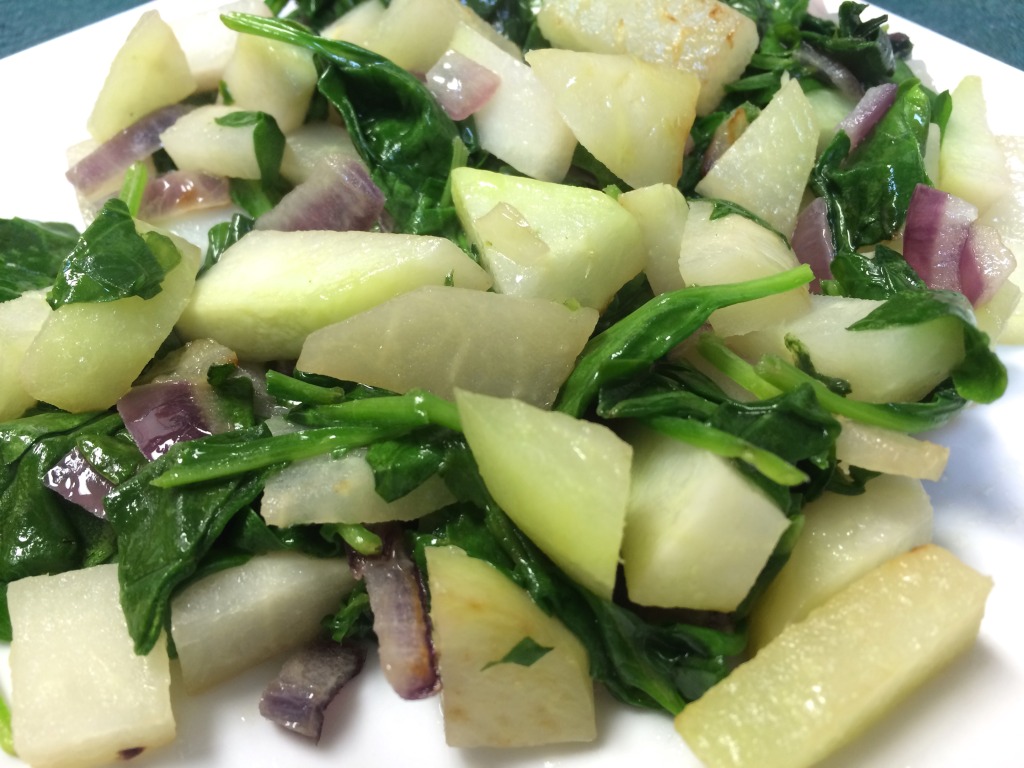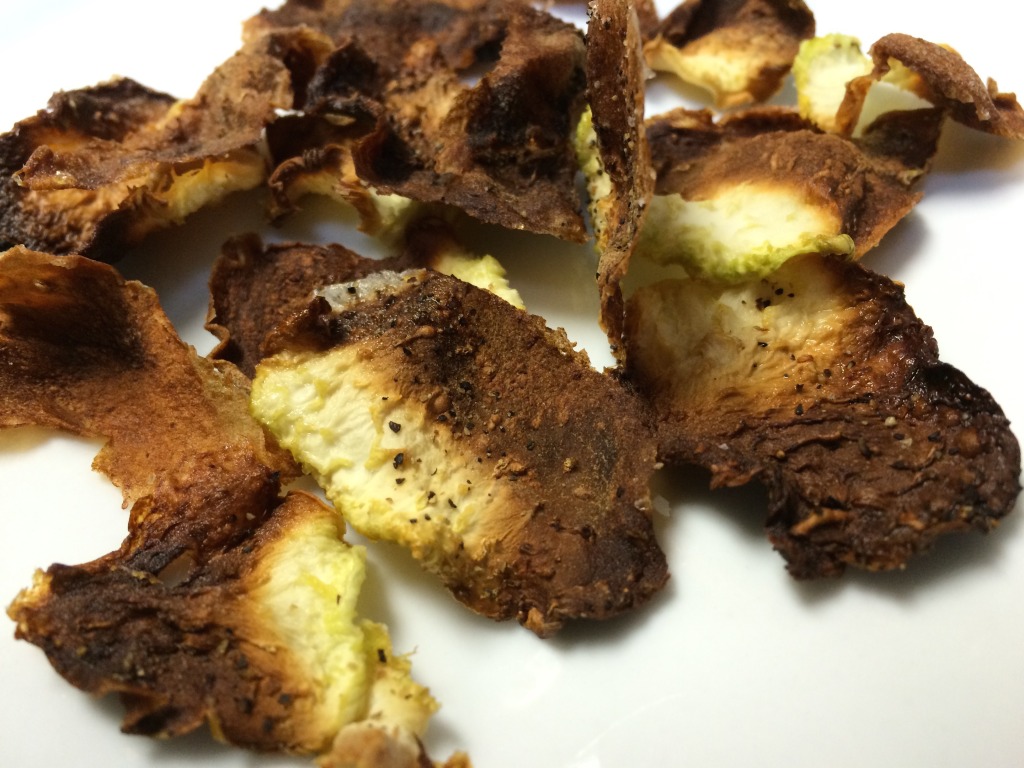What on earth is Kohlrabi?
Are you a kohlrabi fan? Have you ever heard of it?
I’ve been wondering about it for a few months now. It’s one I have never tried. It’s a strange looking vegetable. Some say it looks like a hot air balloon. The way it grows even seems unusual. It looks like a root vegetable that you would have to pull out of the ground, but no, it grown right up, with only the root at the bottom still under the soil.

It’s considered part of the cabbage family, still another odd fact, since it looks nothing like a cabbage! To me it looks more like a turnip. For the last unusual fact about kohlrabi, this vegetable, along with cabbage, kale, cauliflower, broccoli and even brussel sprouts are all bred from the wild mustard plant. That sounds like it requires research all its own, don’t you think?
The name comes from Germany, kohl meaning cabbage, and rabi meaning turnip, so naturally it is commonly eaten there.
It’s been around for a couple of millennium. We first here of it dating back to the first century in Rome, so may be far older than that. A popular vegetable in India, China, Israel and Africa, it has never gained popularity in the United States. Until today that is.
I finally bought kohlrabi. I believe you would call it a ‘bunch’ of kohlrabi. Below we shall see the results.
While reading about various ways to prepare it, I was glad to learn the entire plant was usable. The greens can be used as you would use collard greens. They are good chopped in salad, in soup, or sautéed along with the diced kohlrabi. I froze the greens from mine to add to my next batch of soup.
The turnip looking part of the kohlrabi will keep for up to a month in the fridge—that’s a good long time. The greens won’t last that long though. When you are picking the vegetable, pick green leaves in good condition. If the leaves are yellowing that is a sign that the kohlrabi may be old. If you aren’t going to use the greens within three to five days, stash them in the freezer for later use. That’s what I did with mine.

Today was Kohlrabi Day in Merrci’s test kitchen. For the first time I tasted it! It’s great! I found it to have a slight radish taste uncooked. If you find radishes too hot, you would be happy with the Kohlrabi as a substitute. It was good to eat raw, cut and sliced as you might for a veggie tray. It will definitely be included on my next tray. I love to serve platters of raw vegetables, even for the family. When they are presented on a platter they look and sound so much better. .
You could substitute Kohlrabi for any of the vegetables on this platter
I started by peeling each of the three kohlrabi in the bunch. Then I sliced it for three different recipes. Before or after peeling it, cut off the root. Articles suggest peeling to remove the tough outer skin, though one or two recipes say to leave it on. Those recipes are usually when the kohlrabi is sliced very thin.
Let’s get to the recipes then…

KOHLRABI SAUTE
All of the recipes prepared today were easy. This particular one was fast as well. Since I had frozen the greens, I used my favorite spinach instead. I loved this one! It will definitely go on my list to fix again. The Kohlrabi keeps its shape well. It softens but still retains a slight crunch that is very appealing. Cooked it reminded me a little bit of a parsnip flavor. Really good, just a bit hard to describe.
INGREDIENTS
1 tablespoon butter
1 clove garlic, minced
2 slices of red onion, chopped
1 kohlrabi, sliced about ¼ inches, then halved
4 cups spinach, roughly chopped OR use the kohlrabi greens
Salt and Pepper to taste
INSTRUCTIONS
In a large skillet melt butter, coating pan.
Saute garlic, onion, and kohlrabi 4 to 5 minutes, until it starts to soften.
Add Spinach, sautéing 1 to 2 more minutes until spinach is wilted.
Season to taste and serve.

ROAST KOHLRABI
This was also a cinch to prepare. It bakes 30 to 45 minutes and you have a lovely roast vegetable that would go well roasting with other veggies at the same time. I enjoyed it with and without cumin sprinkled on top.
INGREDIENTS
1 tablespoon olive oil
1 kohlrabi, sliced into ¼ inch pieces
Sea salt to taste
Cumin
INSTRUCTIONS
Preheat oven to 450 degrees.
Place kohlrabi in a small bowl.
Pour 1 tablespoon of olive oil over it, and mix up.
Mix every few minutes for 5 to 10 minutes, to be sure it’s coated.
Spread on lined cookie sheet or pan.
Sprinkle lightly with salt.
Roast for 30 to 45 minutes, tossing occasionally, until browned.
Optional: sprinkle with cumin or another favorite spice.
Serve immediately.

KOHLRABI CHIPS
Lastly, I tried making kohlrabi chips. I love the idea of these. I’d love a somewhat crunchy snack made from vegetables.
INGREDIENTS
1 kohlrabi
1 teaspoon olive oil
sea salt
INSTRUCTIONS
Preheat oven to 250 degrees.
Slice the kohlrabi as thin as possible and as evenly as possible.
Place in a ziplock bag, pouring the olive oil over them.
Seal and mix thoroughly.
Spread on a lined cookie sheet.
If they look uncoated, you can spray olive oil as needed.
Roast for 45 minutes to an hour, tossing occasionally.
Remove from oven when browned and crisp.
Salt lightly when done.
These tasted very good, but I confess I have trouble browning them evenly. Still it was fun to try. If you’ve done kale chips or sweet potato chips, this will be a good addition for you.
Now I know I like kohlrabi, and will definitely be eating it again. My favorite was the saute, but the roasted version was also really tasty. Plus it is excellent raw.
I would suggest trying it in cole slaw or with broccoli slaw—it would be a natural in both, in a salad in small bites, stir fried, roasted, and in soup. The taste is not overwhelming, yet it adds a nice crunch and flavor in each dish.
Nutritionally, it has under 20 calories in a half cup, and is a good source for fiber, vitamin C, manganese, vitamin B6, potassium and copper. It also contains magnesium thiamin, folate and phosphorus.
Another unique vegetable to add to your dinner table, that is if you haven’t already.


